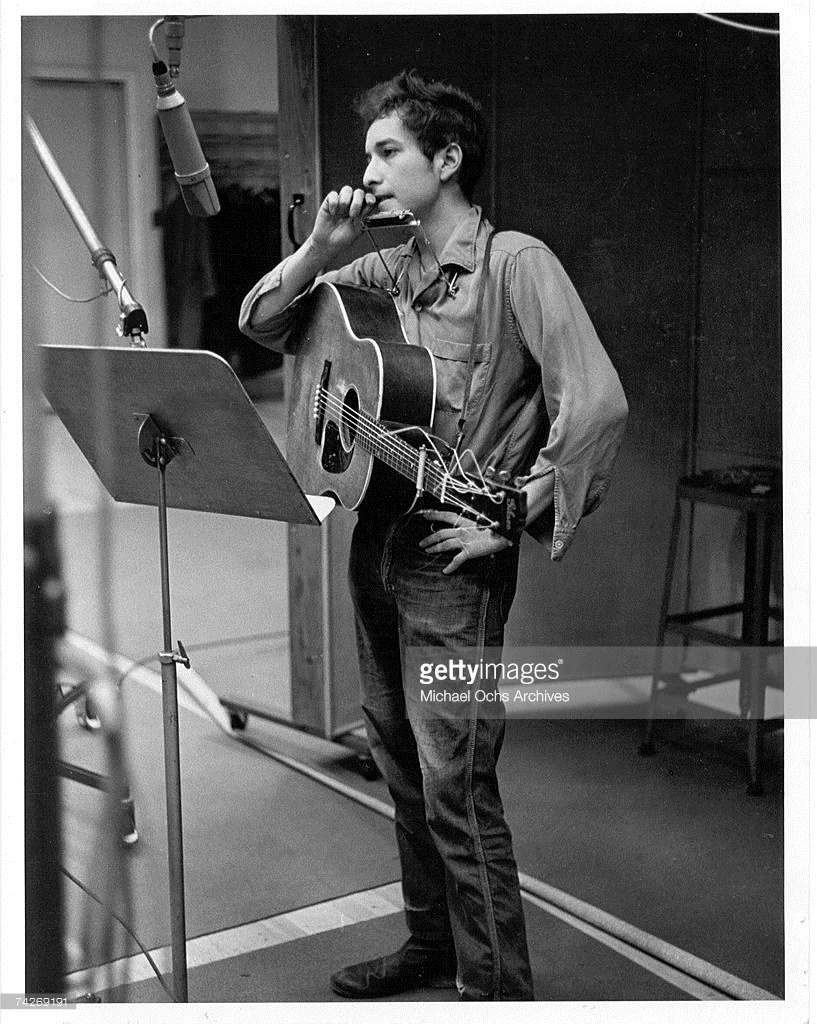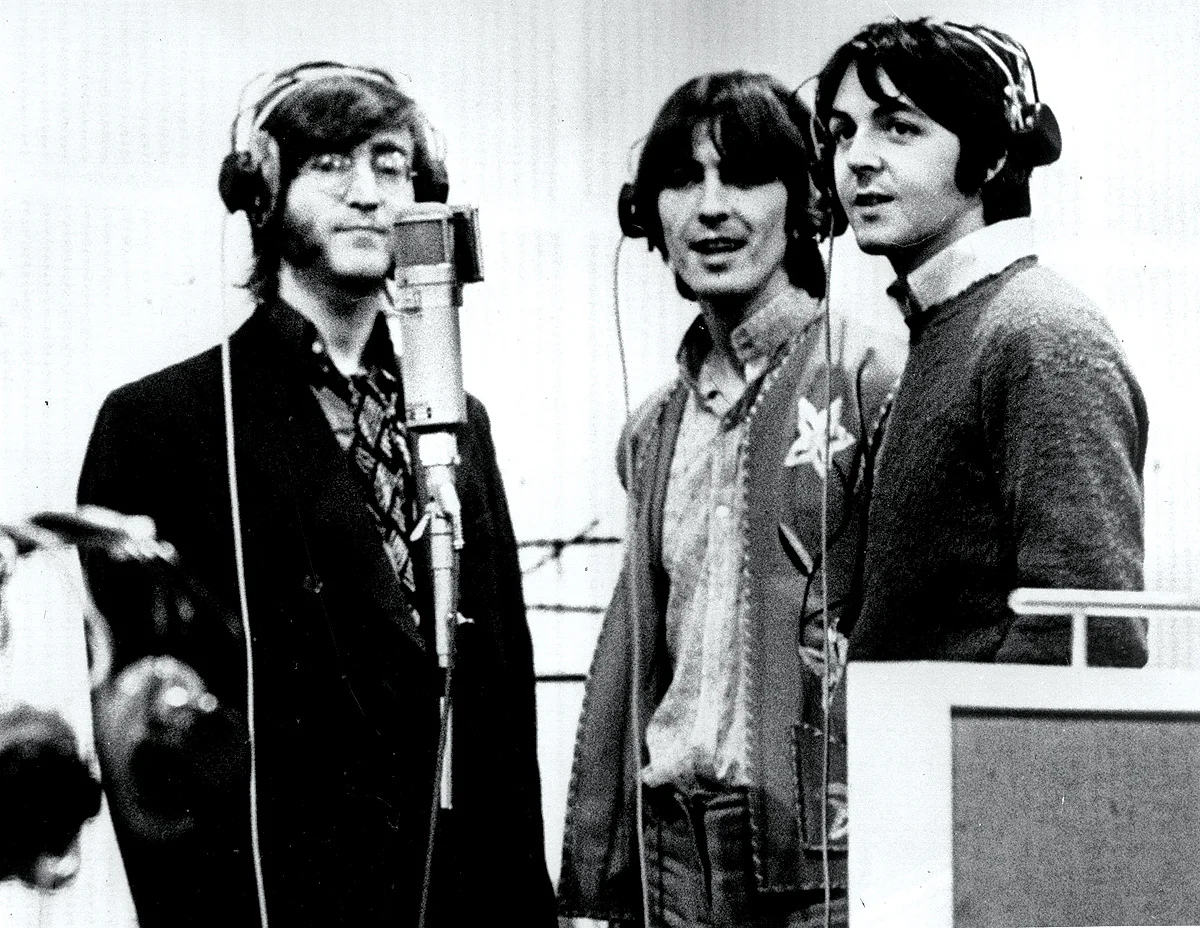Vintage microphones?
You'd be forgiven for thinking that with modern advances in technology an old mic can't be as good as a new one but you'd be wrong.
Anyone who has seen this webpage or read any of our posts on social media will know how proud we are of our microphones, but what makes these mystical things special?
Microphones have been commonly used for capturing and amplifying sound for more than 100 years and although there are a few distinct designs it looks as though microphones are not going to be leaving us anytime soon. In a recording studio many aspects of the technology have changed over the years, each with their own sonic characteristics, the latest and greatest change being the conversion from analogue recording (usually to tape) to digital but one thing has stayed the same and will continue to do so for some time yet and that's the microphone. Every recording needs a microphone so you might as well use the best you can for each source.
People often ask me "what's the best microphone?" and unfortunately for this there is no one answer apart from "the one that's best for the source". Each microphone has it's own characteristic sound and usually that characteristic is best suited to recording a certain type of instrument, voice or sound. For example dynamic ribbon microphones are made using a thin piece of metal instead of a diaphragm which vibrates to turn the sound energy into electrical energy. These microphones typically have a "darker" sound meaning they don't pick up as much high frequencies and they are known for their detailed mid range. These characteristics make the microphone suitable for any source where you want a natural and punchy sound. Here at Rapunzel Studios we use Coles 4038s which are a BBC designed microphone from the 50's which are still in production today. They are best suited for drum overheads (as they can tame any piercing high frequencies from the cymbals and also provide excellent detail), Violin (no squeak here), Brass (no distortion) and electric guitar cabinets (beef and detail).
The other types of microphone are capacitor or condenser (usually valve or FET) and dynamic moving-coil. Dynamic moving-coil microphones are used in two situations; either if you have a very loud source where you need a punchy response or in a situation where you need to cancel out bleed from other instruments in the area (this is why dynamic mics are use on stage in live situations). In the studio we use dynamics for drums (AKG D12, Shure sm57, Shure beta 52), guitar cabinets (Shure sm57) and vocals (the Shure sm7b is an excellent mic and was used to record most of Michael Jackson's hits) usually when the vocal is recorded at the same time as the rest of the band.
Condenser microphones are probably the most common studio mics and they come in various forms: Small diaphragm, Large diaphragm, valve, fet, transformer or transformerless. We use our condensers for all kinds of material from vocals to acoustic guitars to drum overheads to room mics. Choosing the right mic for somebody's voice is always one of the most critical aspects of making a good record, that is why we have a wide selection so all our bases are covered.
Every voice is different from the others, an individual snowflake if you excuse the cliché. It is a simple fact that some voices match some microphones and not others largely due to the frequency response. For example if a voice is very sibilant with lots of ess sounds we would go for a darker sounding mic like a Coles 4038 or a Neumann U67, likewise if we are looking for the high mids to cut through it will always be a Neumann U47 or U87. Sometimes you just have to try until you find the right match.
Small diaphragm capacitors are usually used for instruments where you want high end detail like acoustic guitars or pianos or drum kits. For this job we use the Neumann km84 or if we want a brighter sound the AKG c451.
Why Vintage?
Take a look at these articles: 11 best studio microphones ever and Famous studio mics
You will see firstly that we at Rapunzel Studios have many of the mics mentioned here: Neumann U47, U67, U87 km84 the AKG D12, C451e, C414 Shure SM7b and SM57/58 and the Coles 4038 but you might also notice that many of them were made a long time ago and are not in production anymore. Why is this?
I'm not sure I can answer this fully, I wish all of these mics were still in production, but I can make a start. Firstly, take the Neumann U47, production of these was between 1949 and 1965. These mics are widely considered to be one of the sweetest most flattering mics ever made and it is certainly our favourite here at Rapunzel Studios and it was George Martins favourite too. This mic used the telefunken VF14m valve which is said to be, in combination with the bv08 transformer and the M7 capsule, a major contributor to the sound. This Valve was made using very high grade materials for the German army for the second world war so supplies were limited and when they ran out, they stopped making the mic. Why not make a reissue of the valve? Well this is harder to answer. Firstly valve technology was at its highest when this valve was made. Since then valves are used less and less and therefor to make high quality valves is much more expensive procedure these days. Secondly, all the machines to make the valves have been lost to time. Thirdly, people talk about the quality of the metal being extremely high because it was made for military in the war and there just isn't the the metal available any more. This said, there are many many imitations of the U47 which are getting slowly closer and closer but in all honesty I've not heard a clone that comes close to the feeling, sense of space and flattery that the original U47 gives.
Another reason that some of these mics are not still made is reliability and noise performance. Almost all of these mics have output transformers. Quality transformers are widely considered to impart a sweet depth to audio signals and now recording equipment is revered when it has transformers but the negative is that they are not the quietest way to balance the audio and there was a time in the 80's and 90's when transformers were being removed from gear for the sake of performance figures. Take the AKG 451e for example, this is a bright mic but never seems harsh. The 451e's replacement the 451b has the transformer removed and does not sound as sweet but has a lower noise floor. Likewise, in theory, all the parts (other than the telefunken ef86 valve) to build a Neumann U67 are still available but the reliability of valve mics are considered to be not acceptable these days by Neumann. In the 90's Neumann came across a pile of Telefunken ef86 valves and made a reissue of the u67 for a short time.
So what qualities do these mics have that make them so desirable? In short, the sound. Despite what some manufacturers will tell you there are certain sounds that you can only get with certain equipment. I'm not an electrical engineer so I can't tell you all about phase, frequency response, 2nd and 3rd harmonic distortion but I'm sure there are ways of measuring sound that have yet to be discovered - if there weren't someone would have invented accurate clones of all these microphones. When you hear that sound you know that it's right because you've heard it on a thousand records that you know inside out and love, and then you understand what all the fuss is about. The U47 sounds like The Beatles, the U67 sounds like Kurt Cobain, the 4038 sounds like John Bonham and the D12 sounds like, well it sounds like a bass drum! Once you have the sound right at the source then there is no fighting with extreme eq settings and endless plugins to get the sound you want, you've already got a good sound so you can concentrate on making it even better. The U47 has forward high mids but it sounds three dimensional and flatters most voices, the U67 has solid low mids which gives you a firm, mature sound, the SM7b sounds punchy and dynamic and rhythmical. There are reasons why these mics cost so much and why all the top producers get excited about them, because it makes the producers life easier and it makes the music come alive.
There are also modern classic microphones such as Brauner and the Sony c800g and they cost just as much as some vintage microphones, a lot of the modern condensers for example have a very hyped top end for example, by this I mean that a lot of high end, around 10KHz can flatter sources (particularly vocals) but when you come to mix the recordings you'll find that you'll have uncontrollable sibilance and the collective high end sounds brittle. The collection of vintage and modern microphones we have here are based on my experience and taste and we are sure that we have all the colours for any type of musical pallet.







